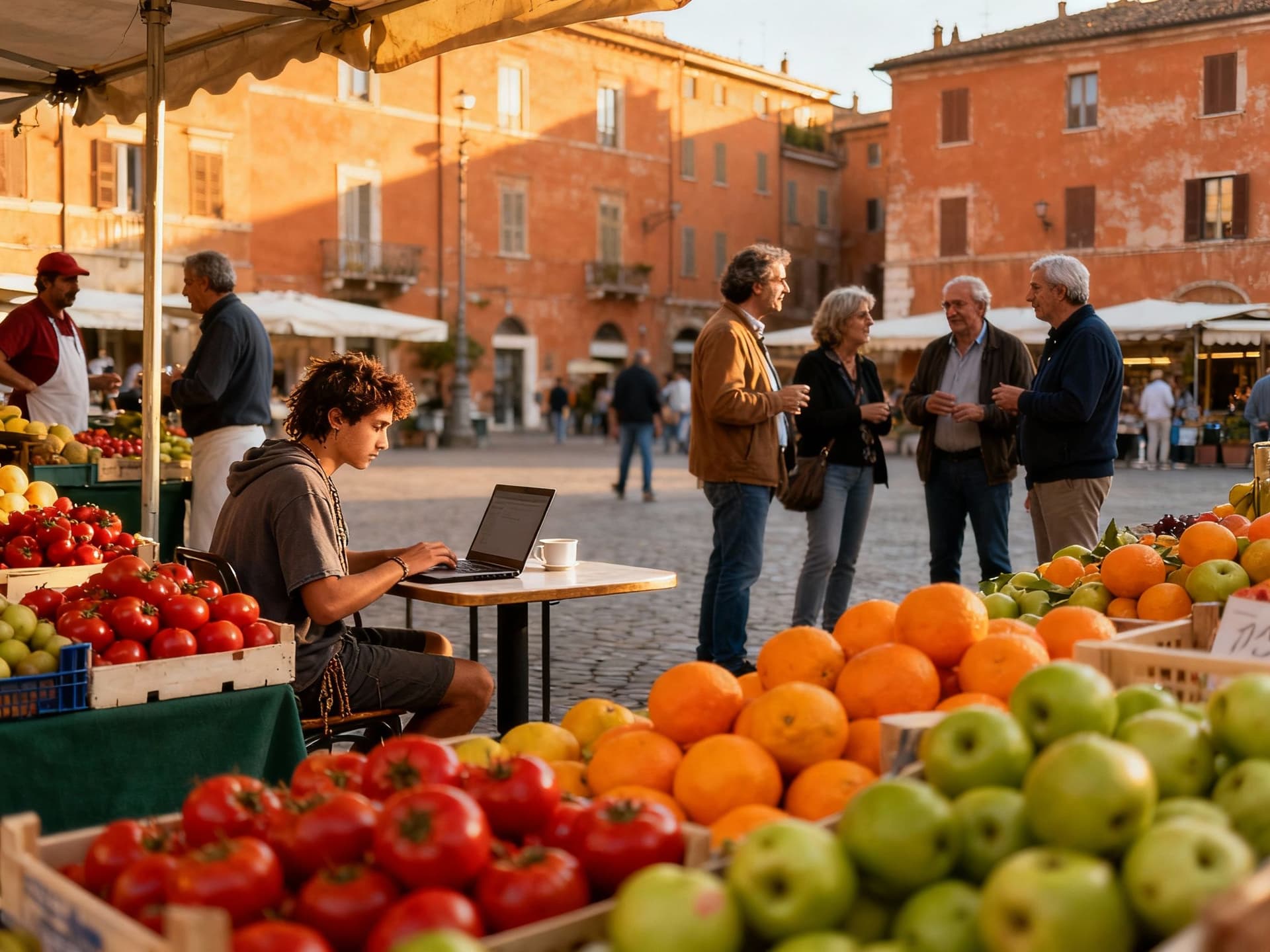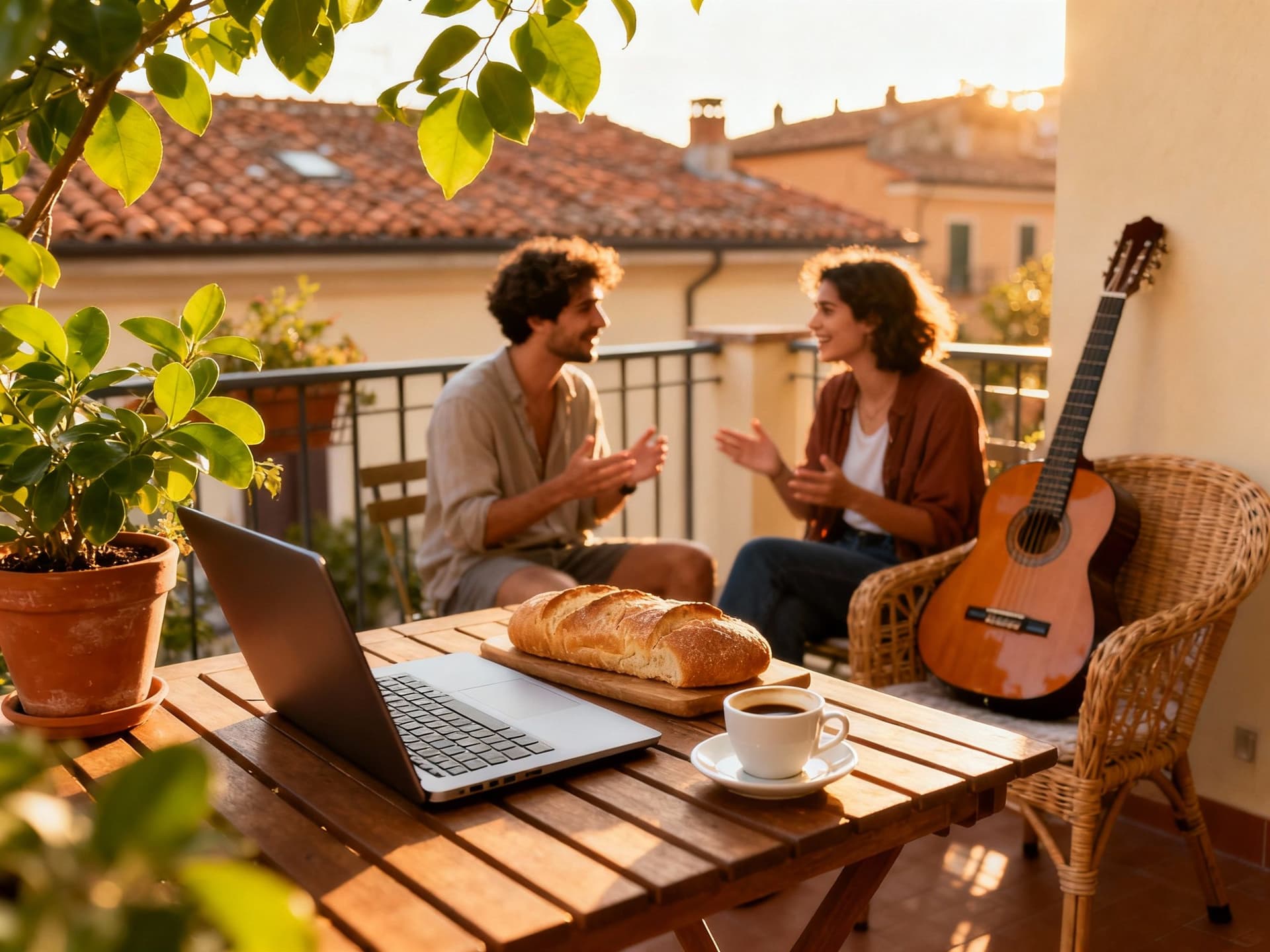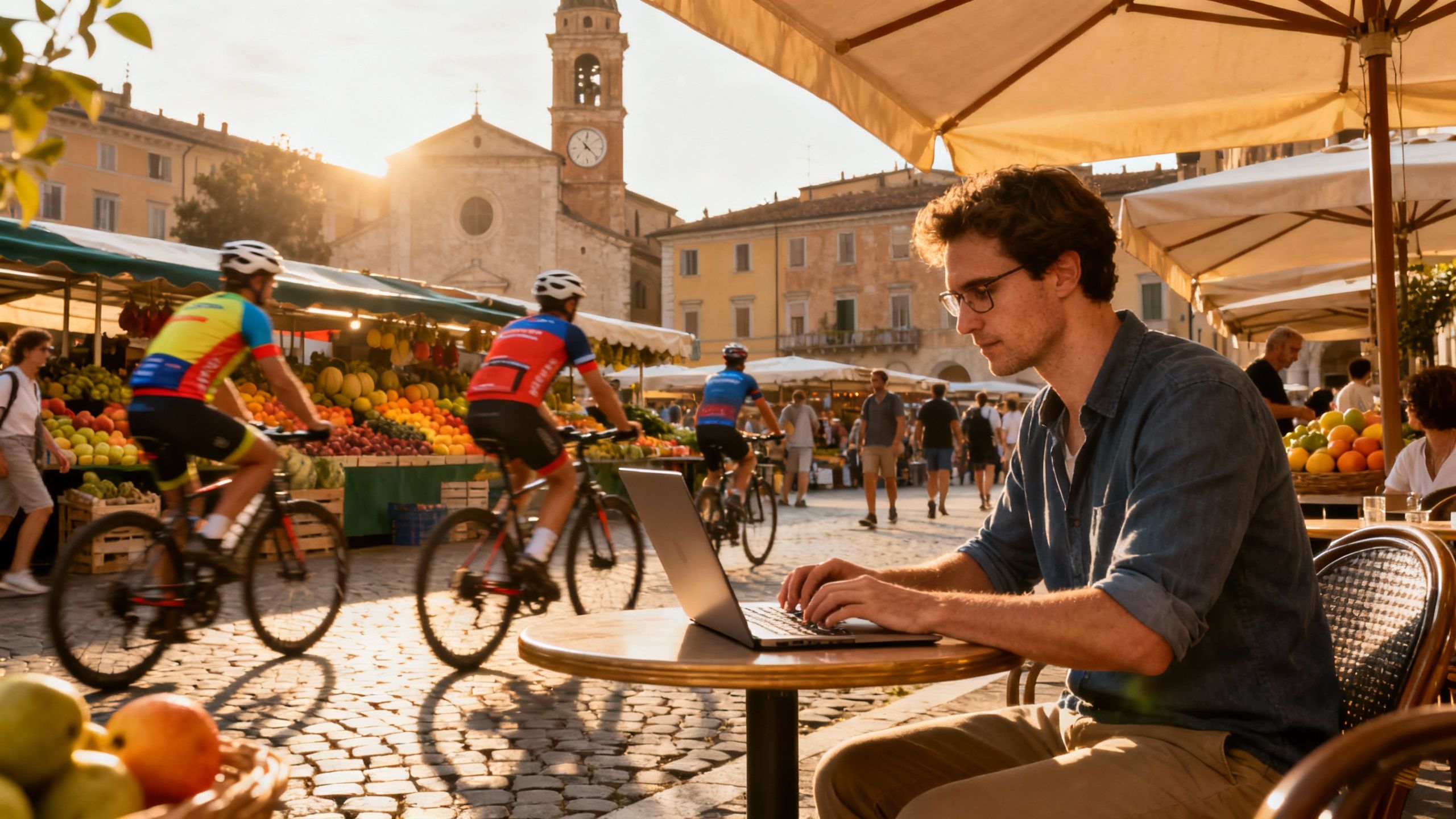Elective Residence vs Investor Visa: Which Fits Your Italian Life?
Italy’s lifestyle-first visa tradeoffs: Elective Residence for slow, passive-income living vs Investor Visa for active investors — match visa to daily life, not just bank balance.
Imagine sipping an espresso on a narrow piazza in Trastevere at 9am, then logging on to your laptop from a sunlit balcony overlooking terracotta roofs. Italy moves at a slower beat, but its cities pulse with neighbourhood cafés, weekend markets and lively after-work aperitivos. For nomads and remote professionals, that rhythm matters: it shapes where you’ll want to buy, how you’ll work, and which visa route actually fits your life. Recent market reports and government guidance show clear visa paths — but the right one depends on whether you want community life in a city, a quiet coastal base, or to plant roots with long-term residency.
Living the Italy lifestyle

Italy isn’t a single mood — it’s a playlist. Morning markets and cafe ritual in Milan and Bologna; golden-hour passeggiata in Amalfi towns; vineyards and slow-food Saturdays in Tuscany. Daily life centers on small rituals: a barista who knows your name, a baker who saves you the last cornetto, neighbourhood trattorie that double as social clubs. Those small things determine what property type suits you: high-rise apartment near coworking in Milano, a courtyard flat in Rome’s Monti, or a stone house with a garden outside Verona.
Spotlight: Rome — Trastevere, Monti, and Testaccio
Picture wandering cobbled lanes from Piazza di San Cosimato to the Tiber, choosing between tiny osterie and late-night wine bars. Trastevere and Testaccio still feel intensely local: vegetable stalls, artisan shops, and Italian families living above cafés. Monti offers a hipper, more walkable alternative — boutiques, coworking spots and quiet squares for laptop afternoons. If you crave community after work, these neighbourhoods are social hubs where owning a small flat means instant belonging.
Food, seasonality and the rhythm of time
Markets set the calendar: porcini and truffles in autumn, citrus groves in winter, and seaside fish markets that hum in summer. Festivals — Palio in Siena, film season in Venice — reshape neighbourhood life and short-term rental demand. That seasonality affects property prices and rental windows: buy a seaside apartment and expect intense summer demand but quieter winters; choose a hilltop vineyard house and enjoy harvest-time energy that raises local rental rates temporarily. For lifestyle buyers, align the calendar of local events with how often you’ll want to host or rent.
- Trastevere espresso-to-work mornings; Monti coworking and evening aperitivi; Mercato di Testaccio for fresh produce; Amalfi coast paseggiata and sea-salted air; Florence Oltrarno artisan workshops; Verona weekends at vineyards and farmers’ markets
Making the move: lifestyle meets visas and residency

The dreamy piazzo needs paperwork. If you plan to stay over 90 days, you’ll apply for a residence permit (permesso di soggiorno) within eight days of arrival and work with local Questura offices. For lifestyle-first buyers there are two visa routes that nomads talk about most: the Elective Residence Visa (for financially independent residents) and the Investor Visa (for capital investors). Each carries different lifestyle trade-offs — from the freedom to work to family inclusion and tax choices — so pick the route that fits your daily life, not just your bank balance.
Elective Residence Visa — quiet life, strict proof: This visa is for people who can support themselves without working in Italy, often retirees or digital nomads with stable passive income. Expect to show long-term housing, steady passive income (commonly cited thresholds start around €30k–€32k yearly for a single applicant), and comprehensive health coverage. It doesn’t allow local employment, so if you want to freelance for Italian clients or build a local company, this may clash with your daily intentions.
Investor Visa — buy into the economy, not necessarily property: Italy’s investor route accepts capital placement in startups, companies or government bonds (typical thresholds: €250k in innovative startups, €500k in companies, or €2m in government bonds). The upside is a residency permit that allows work and family inclusion. Important: real estate purchases alone generally don’t qualify for the Investor Visa, so if you want a ‘property-for-residency’ shortcut, Italy isn’t the easiest route compared with some other European programs.
- Decide your lifestyle priorities: 1) If you want to work locally or run a business, consider Investor or work visas; 2) If you want to live quietly and maintain income from abroad, Elective Residence might fit; 3) If tax planning is central, investigate Italy’s resident tax regimes with a specialist; 4) If a coastal rental income matters, factor seasonality into returns and choose areas with year-round appeal.
Insider knowledge — what expats wish they’d known
Here’s the real talk. Bureaucracy takes time and local quirks can change outcomes: some consulates apply Elective Residence rules more strictly than others, and Questura wait times vary by city. Many expats underestimate language and community-building needs — you’ll adapt faster if you learn basic Italian and join local groups (volunteer at a market, take a cooking class, join a language exchange). Agencies aren’t just closers; good local agents know which neighbourhoods have coworking cafes, where fibre internet is actually reliable, and which blocks sell below market because of noisy roads.
Cultural integration and day-to-day life
Italians build lives around neighbourhoods. Respect the rhythm: long lunches in some towns, late dinners in others. Saying hello at the bar, learning market vendors’ names, and joining local clubs unlock friendliness faster than expensive language courses. For nomads, coworking communities in Milan, Bologna and Florence give instant social circles; smaller towns reward patience and reciprocity. Expect slower but deeper relationships here — and properties that reflect that: terraces that host neighbours, kitchens designed for long meals, and basements that become bike repairs or pottery studios.
- Practical checks agents should do for you: confirm fibre availability and upload speeds; verify property heating systems (important in mountain and northern homes); check seismic and heritage restrictions on renovations; review short-term rental rules at the municipal level; confirm cadastral and title consistency before offers.
Long-term lifestyle note: Italian life rewards those who slow down. Five years here means deeper bonds, regional holidays, and sometimes citizenship eligibility for those who meet the long residence rules. If your plan is to split time between Italy and elsewhere, pick a base that supports both: good mobile internet, a smooth residency route that matches your visa intentions, and an agency that offers property management when you’re away.
Italy’s economy and local markets move too — retail trends and inflation shape daily costs and rental demand. Keep an eye on national stats and local agency intel when timing offers: periods after festivals or off-peak seasons often bring motivated sellers and lower competition, while harvest and festival seasons can make neighbourhoods vibrantly expensive. Use market data alongside local knowledge to decide whether to act now or wait for the quieter window.
- Quick-win checklist before an offer: confirm visa eligibility for your intended route; get a fibre/internet speed test from the provider; ask the agent for recent comparables on the street; budget for municipal taxes and renovation limits; plan a 7–10 day on-the-ground scouting visit during a non-peak month.
Conclusion — Italy as lifestyle, then legal reality. If you’re picturing morning markets, late-night aperitivi, and a weekend in hilltop vineyards, know that each of those pleasures leans on practical choices: the right visa, the right neighbourhood, and a local team who speaks both Italian bureaucracy and your lifestyle language. Start with the feeling you want to curate — city buzz, coastal calm, or countryside seasons — then pick the visa route and property type that let you live it without bureaucracy eating your golden hour. When you’re ready, choose an agency that matches your tempo: lively, local, and experienced with the residency path you need.
Danish investor and relocation advisor focusing on Portugal and the Algarve; loves coworking culture and expat networks.


